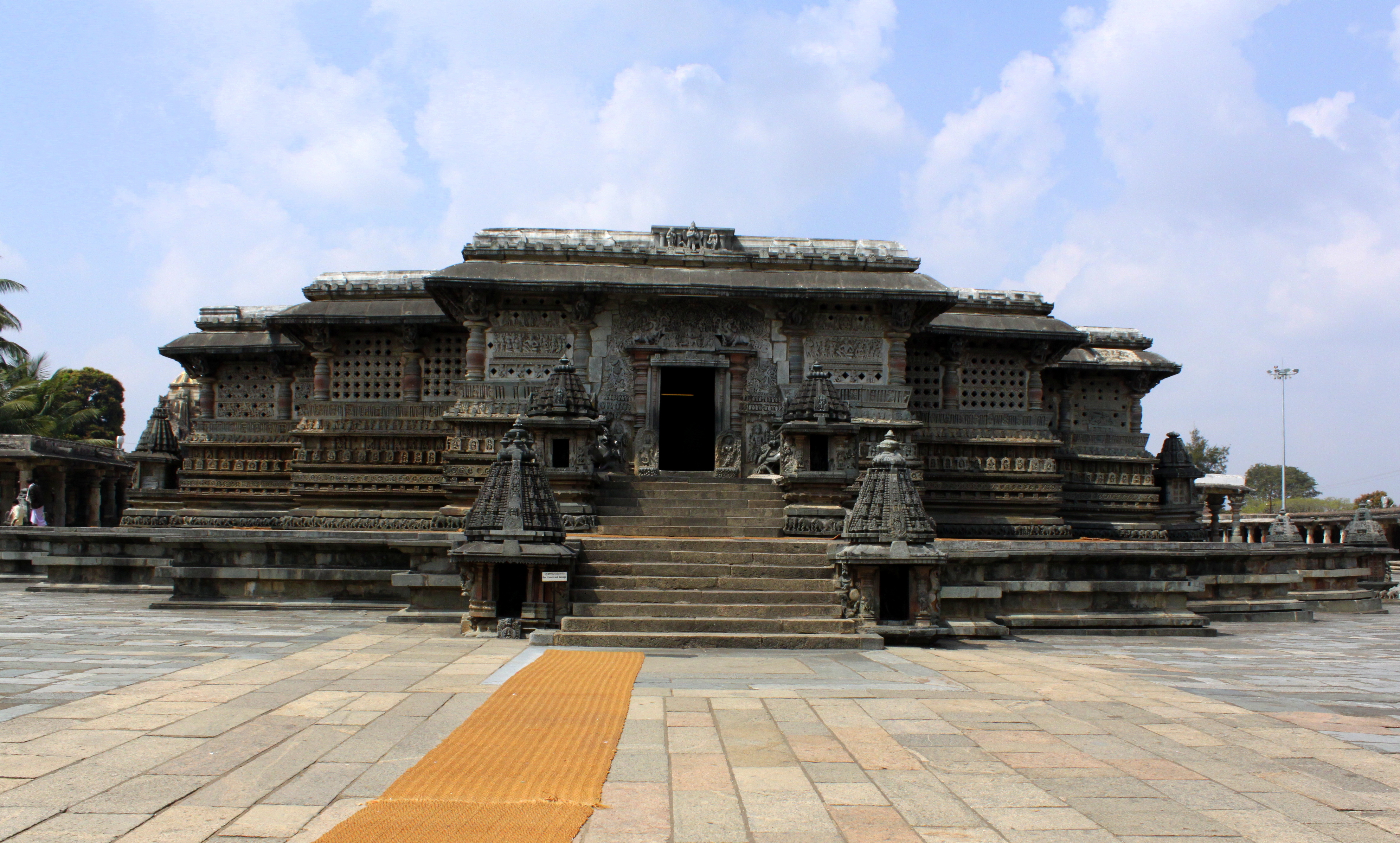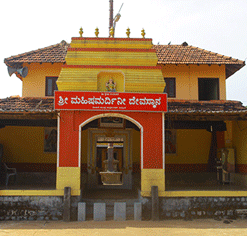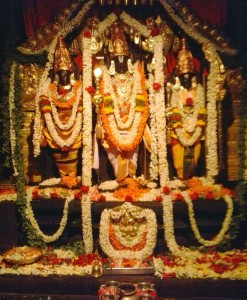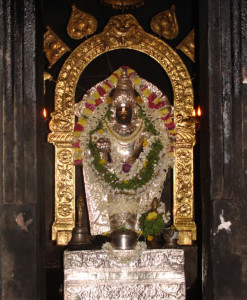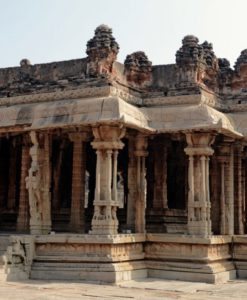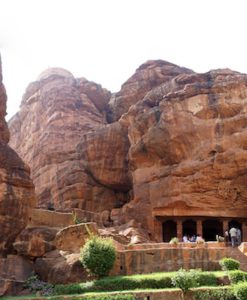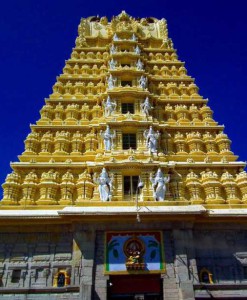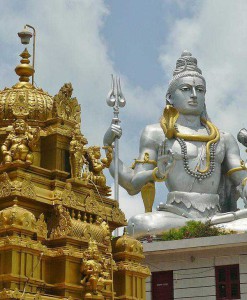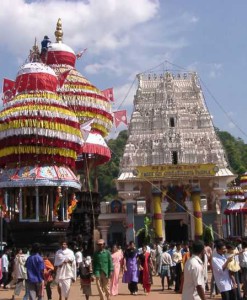No products in the cart.
The Chennakesava temple was originally referred to as the Vijayanarayana temple. It is situated on the Yagachi River at Belur. It was previously the capital of the Hoysala rulers. The city of Belur is about 40 kilometres from the city of Hassan. Bangalore is about 220 kilometres from Belur. Chennakesava means “handsome Kesava”.
Lord Vishnu is worshipped in this temple. Belur has many beautiful temples which were built by the Hoysalas. Halebidu which is close to Belur is a popular tourist destination in Karnataka. The Chennakesava temple has been conferred as a heritage site by UNESCO.
Chennakeshava Temple, Belur
- Temple History
- Architecture
- How To Reach The Temple
- Daily Poojas And Festivals
- Videos
- Additional Information
The temple was commissioned by King Vishnuvardhana in 1117 AD. Scholars are divided about the reasons for the construction of the temple. The military successes of Vishnuvardhana is considered a probable reason. Some scholars believe Vishnuvardhana commissioned the temple to surpass his overlord, King Vikramaditya VI of the Western Chalukya Empire (who ruled from Basavakalyan), after his initial military victories against the Chalukyas.
According to another theory, Vishnuvardhana was celebrating his famous victory against the Chola dynasty of Tamil country in the battle of Talakad(1116 AD), which resulted in the annexation of Gangavadi (modern southern Karnataka) by the Hoysalas. Another theory points to Vishnuvardhana’s conversion from Jainism to Vaishnavism (a sect of Hinduism) after coming under the influence of saint Ramanujacharya, considering this is a predominantly Vaishnava temple in sculptural iconography. The Hoysalas employed many noted architects and artisans who developed a new architectural tradition, which art critic Adam Hardy called the Karnata Dravidatradition.
In all 118 inscriptions have been recovered from the temple complex, covering the period 1117 AD to the 18th century, giving historians details of the artists employed, grants made to the temple and renovations committed during later times.
The ornate gopurams in the Chennakesava temple are attractive. When one enters the temple, one gets a feel of the grandeur of the Hoysalas. The sacrosanct platform of the temple has a golden horse along with the temple chariot. Lord Vishnu’s carrying the Garuda is at the entrance and faces the temple.
The temple structure has exclusive filigree gleams which shine like metal. The sculptures are well proportioned. Soapstone which is light greenish in colour has been used to create the Chennakesava temple. Smaller temples of Ranmaganayaki and Soumyanaki, the beloved of Lord Chennakesava lie within the temple premises. One gets to see temples of Anjaneya and Narasimha from here. The senior queen of King Vishnuvardhana, Shantaladevi who was a dance legend, built the Channigaraya temple.
The exterior of the temple is intricately carved. Mythological stories as well as stories from the Upanishads and Puranas are depicted here. Beadwork carvings can also be found in the temple art and architecture. Every piece of art work has been depicted very carefully and with skilled craftsmanship. The celestial nymphs or Madanikas are the other highlights of the temple’s beautiful art and architecture. The Madanikas are an epitome of the feminine form of Queen Shitladevi. The varied moods of the Madanikas are clearly depicted in the architecture.
The sculptures of Darpana Sundari, The Bhasma Mohini and the Huntress are some of the favourites. The royal dynasty’s emblem is the hallmark of the temple which is the major attraction on entering the temple and this is visible in every Hoysala temples. The chief deity, Kesava and Lord Krishna are worshipped here. The six foot tall, beautiful image of Lord Krishna installed at the sanctum looks marvellous.
Hassan is well connected by roads and railways. One can get to Belur from Hassan by the KSRTC (Karnataka State Road Transport Corporation) buses. There is no airport at Hassan and the closest airport is at Bangalore or Mysore. There are private buses operating from Belur to Hassan. If you want to take the train, there are passenger trains from Hubli, Bangalore and Mangalore.
Monday-Friday: 9:00 am to 12:00 pm & 4:00 pm to 8:00 pm
Saturday, Sunday & Holidays: 9:00 am to 8:00 pm
Some of the major festivals celebrated annually include Ram Navmi, Janmashtami, Shivratri, Holi, Ganesh Chaturthi and Diwali. Marking the Hindu New Year, Diwali is one of the grandest Hindu festivals, and attracts many visitors and devotees to the mandir.
Vishnuvardhana, the Hoysala king commissioned the Chennakesava temple in 1117 CE. Researchers have established that the temple was built as a symbol of victory of King Vishnuvardhana. The King emerged victorious against the Western Chalukya Empire. There is another story which says that King Vishnuvardhana achieved victory against the Cholas in the Talakad battle. This is how Gangavadi was conquered by the Hoysalas. As per historians, the temple celebrates Vishnuwardhana’s conversion from Jainism to Vaishnavism.
Many artisans and skilled architects were employed to build the temple. There are about 108 inscriptions in Kannada in the temple complex. The Chennakesava temple has a big and open hall, a huge platform and a shrine which clearly reflects the Hoysala architectural style.

